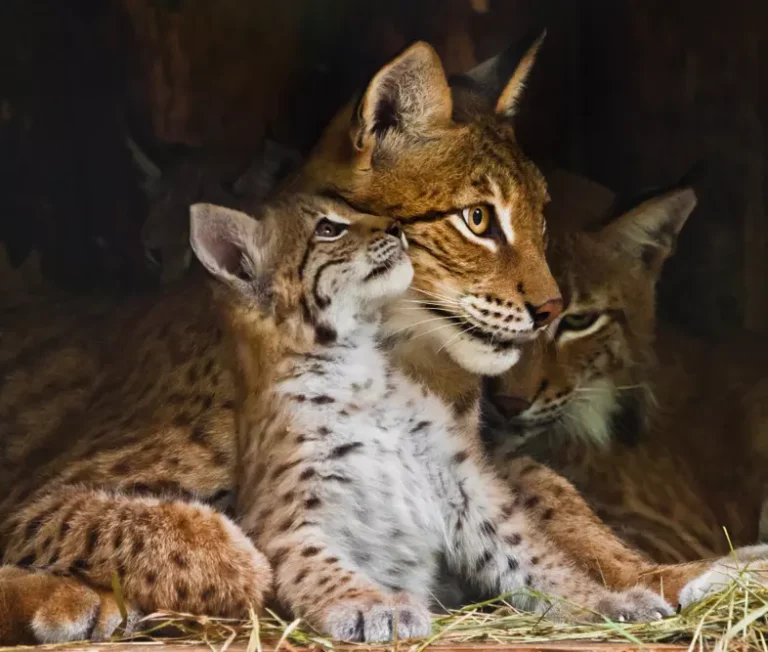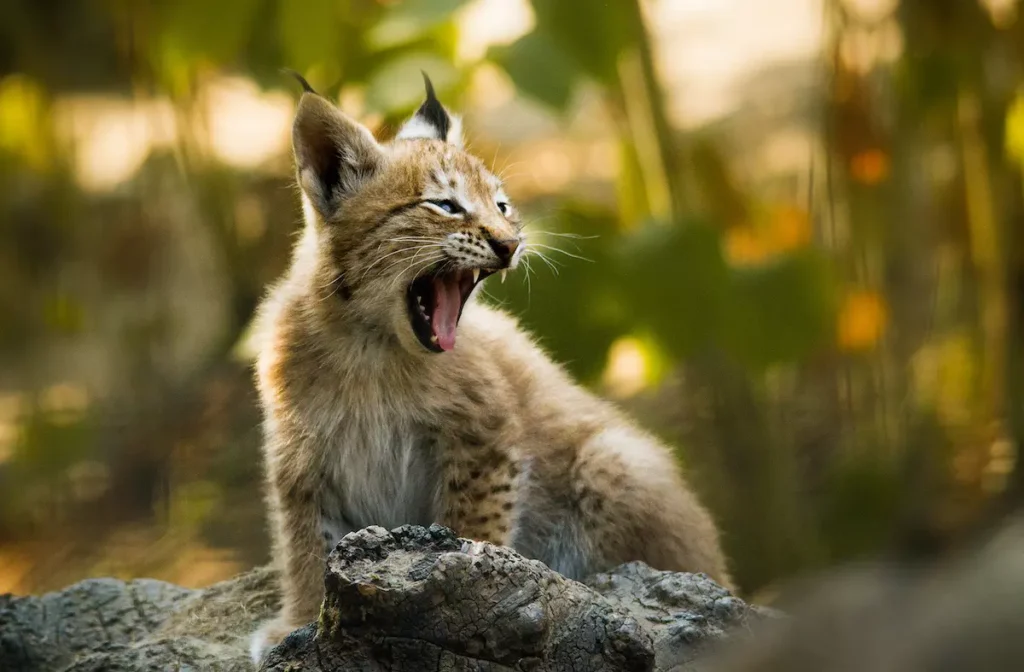End Trapping for Pelts
Bobcats Trapped for Fur: The Unethical Commercialization and Wrongful Exploitation of Colorado Wildlife
One of the ethical tenets of North America’s traditional wildlife management model, along with fair-chase, is that wildlife should not be killed for commerce.
But this is exactly what Colorado is doing by allowing the practice of trapping, killing and skinning bobcats just to sell their fur on the market.
It’s bad enough that we allow bobcats to be unethically chased by dog packs – just like mountain lions – and shot for recreation. The large majority of bobcats – about 2,000 each year – will die at the hands of a fur trapper, however, who will make $1,000 on a foreign market in China or Russia.
With a “furbearer” license around $30, trappers may kill as many bobcats as they want seasonally. They set thousands of traps in our wildlands every year – 4,000 one year alone – and are asked to check traps just once every 24 hours.
There’s no database tracking how many animals, or what kind of non-target animals have been trapped, injured, or killed in bobcat traps. We know that wild animals including bald eagles and domestic pets can and have been caught, injured, and killed due to exposure to the elements or while struggling to escape.
There is nothing to prevent mothers with dependent young from being trapped and killed, leaving orphans behind. Both bobcats and mountain lions can and do breed any time of year.
None of it makes any sense, because not only do we not know how many bobcats live in Colorado, but they are not the sole property of fur trappers, who are doing so much damage.
Trail camera footage courtesy of Dave Ruane, Colorado hunter and CATs coalition member. Read his letter in support of the citizen petition that was submitted to CPW asking them to ban recreational and commercial bobcat hunting and trapping.
Inhumane and unaccountable methods
Historically most bobcats are killed by strangulation from a “choke stick,” poison, or bludgeoning to death, because trappers say they like to preserve the cleanest pelt. Any rifle, handgun, shotgun, handheld bows, crossbows, or any air gun pre-charged can be used to kill a trapped bobcat on site, according to state guidelines. But there are clear allowances today in Colorado for trappers who wish to bludgeon a bobcat to death and keep the pelt clean from blood that spills after the cat is shot. There is zero oversight of the process in the field.
In California, where bobcats haven’t been hunted for three years, the populations are stable. In other states where bobcats are not trapped, such as Connecticut and New Jersey overpopulation is not an issue of concern.
Trapping unlimited bobcats when we have no statewide data or population count isn’t managing anything, not even trappers.
Fur trappers are nothing worth conserving. Consider that 700 trappers kill bobcats each year (0.01% of all Coloradans), and yet they contribute to the largest cause for bobcat mortality.

Trophy Hunting , Trapping and Killing Bobcats: The Methods
Hounding and Baiting
The large majority are baited, caught in live cage traps, then killed, for the personal profit of selling the fur on the foreign fur fashion industry market in Russia and China.
Strangling, poison and bludgeoning
Historically most bobcats are killed by strangulation from a “choke stick,” poison, or bludgeoning to death, because trappers say they like to preserve the cleanest pelt.
"As a country we’re outraged at the poaching of elephants and rhinos in Africa that’s driven by China’s appetite for the illegal wildlife products. But here we are in America, killing wildlife legally for shipment to China — under conditions that are often cruel and inhumane."
BOBCAT TRAPPING IS for PERSONAL PROFIT
(to pause on the carousel, hover over the quote)
"Beautiful and unique bobcat we called in a few nights back. I’ve taken (killed) one other bobcat with white toes (one foot). Has anyone else taken a white footed cat before?"
From a bobcat hunter's facebook post
"When you get to your hunting area, pull your vehicle off to the side of the road, and when you get out, be sure you don't slam the doors, don't talk to one another, and don't smoke,".... You want to get 60 to 100 yards away from your vehicle … When you begin calling, don't let your enthusiasm destroy the reality of the drama you're attempting to create.… a bobcat may take 30 minutes or more…. Arguably, no form of hunting is more demanding of skill, dedication, shooting ability and patience than bobcat calling.… Miss him the first time, and you can call him back again and again."
"Caged traps are successful for bobcat but there's no way around the size and weight. The taller the trap, the better. Duke makes some great traps for bobcats. Sorry that your state doesn't allow for other traps."
From a bobcat hunter's facebook post
"I shoot heavy-caliber bullets for coyotes and Bobcats as it doesn’t tear up the hides as bad. I like using the Primos Catnip call; it works well for Bobcats. I also use the Lucky Duck Revolt electronic call."
Bobcat Traps Are Also Dangerous for Lynx

Although it is illegal to harm or kill lynx, they may be mistaken for a bobcat and may be caught, injured or killed in bobcat traps.
We only have an estimated 150-250 individuals existing in our state. Lynx had been wiped out due to trapping for their fur, poisoning and decreased habitat, but were reintroduced in the 1990’s by Colorado Parks and Wildlife.
Lynx are attracted to bait set for bobcats, and have been harmed, injured or killed when accidentally caught in traps indiscriminately set for other species. State and federal agencies have documented numerous captures and deaths of lynx in traps set for other wildlife.
CPW data shows a Colorado lynx traveled to Canada and was killed in a trapping line neck snare. Another lynx was shot and killed by a person who thought it was a bobcat. Between 1998-2008, at least 15 lynx were inadvertently caught in Montana traplines set for other species
Bobcats videos
Video of a rare sunbathing lynx near Silverton, Colorado, denverpost.com
Rare lynx sightings in the San Juan Mountains Colo., CPW SW Region posts
A sleepy lynx on a sunny spring day in the San Juan Mountains, Colo.
A new film from Colorado Parks and Wildlife’s mammals research section showcases the ‘Shadows of the Forest’ in Colorado’s high-elevation wilderness, the Canada lynx. The film was produced by Sean Ender of Peak to Creek films.
See our science page for the top 10 science-backed reasons not to trophy hunt and trap Colorado’s wild cats.
"When I became a veterinarian, I took an oath to end animal suffering. And when I learned that a bobcat in my community had been trapped and strangled to death, I vowed that this would be the catalyst for change for the humane treatment of bobcats. Please join me and the members of my community who will be voting to end archaic and cruel bobcat trapping in Colorado."
— Christine Capaldo, DVM

Why would anyone want to kill a beautiful bobcat?
By Christine Capaldo, DVM
It was a cold day in February of 2017 when I learned that a bobcat in my community in southwestern Colorado had been trapped and strangled to death.
A witness to the killing told me it was “gruesome.” A few weeks earlier, I had seen the most beautiful bobcat across the road. He darted away down the snowy slope and then stopped, turned and looked at me with curiosity for a few seconds. I felt blessed to have seen such a magnificent wild cat and was sick at the thought that it may have been this bobcat who suffered at the hands of a trapper.
On that day, I vowed as a veterinarian that this bobcat would not be forgotten and to become an ally and advocate for all bobcats.
Our community found out that bobcat trapping in Colorado is legal: For less than $50, anyone can purchase a “furbearer license” and then trap and kill as many bobcats as they want from Dec.1 until the end of February.
Why would anyone want to kill a beautiful bobcat? They’re not hurting anyone – they’re only about twice the size of a domestic house cat — and they are extremely crucial for rodent control.
After some investigating, we learned that trappers in Colorado personally profit from selling fur from bobcats to fur buyers. Since the fur industry has been largely eliminated by humane consumers in the United States, the pelts are sold to foreign countries such as China and Russia to make luxury fur coats. The rest of the animal is discarded.
No one knows how many bobcats exist in Colorado, but the 500 to 700 trappers kill almost 2,000 bobcats each season. As a biologist, I know that this is reckless and unnecessary, especially given the plight of Canada lynx, a close relative to bobcats, who went extinct in Colorado after unlimited trapping. Furthermore, there is absolutely no scientific reason to kill bobcats: they won't overpopulate if not hunted because they are slow reproducers and dependent upon prey populations.
(continued, use cursor for dropdown)
I couldn’t believe that there is also no limit on the number of traps set out by bobcat trappers in Colorado: thousands every season on public and private lands. Traps are indiscriminate — meaning any animal that can fit in the trap could be caught and harmed. Animals such as endangered Canada lynx, raptors, and companion animals are surely caught in traps. Bait in traps intended to attract bobcats will naturally attract reintroduced Canada lynx, which are illegal to harm or trap.
I wondered how many animals are inadvertently caught and harmed in unattended traps. No one knows: There’s no database that tracks how many animals are injured or killed in traps every year. Trapping wildlife for the purposes of commerce or fun is harmful, unnecessary, reckless, and cruel and the majority of Colorado citizens, including sportspersons, vehemently oppose it. The time is long overdue to ban this barbaric practice.
We know that wild animals panic, struggle to escape, and are injured when trapped. They’re also exposed to direct sun, snow, and freezing temperatures. Every time there is a snowstorm with heavy snowfall in Colorado, I wonder how many bobcats suffer by being buried alive in traps. Certainly, some animals die before trappers check the trap, and those who are released may eventually succumb to injuries sustained while they were trapped.
Because trappers are highly motivated to preserve the pelt for personal profit, bobcats caught in traps are reportedly killed by any cheap method that won’t damage the fur: strangulation, chest compression (standing on their body so they can’t breathe), injection of poison, and drowning. These methods of killing would cause prolonged suffering, pain and extreme distress which is why they are adamantly condemned by the veterinary community. This inexcusable cruelty equates to nothing less than the torture of our wildlife all hidden from public view.
When I became a veterinarian, I took an oath to end animal suffering. And when I learned that a bobcat in my community had been trapped and strangled to death, I vowed that this would be the catalyst for change for the humane treatment of bobcats. Please join me and the members of my community who will be voting to end archaic and cruel bobcat trapping in Colorado.
Christine Capaldo, DVM, Veterinarian in southwestern Colorado and a member of the CATs coalition.

